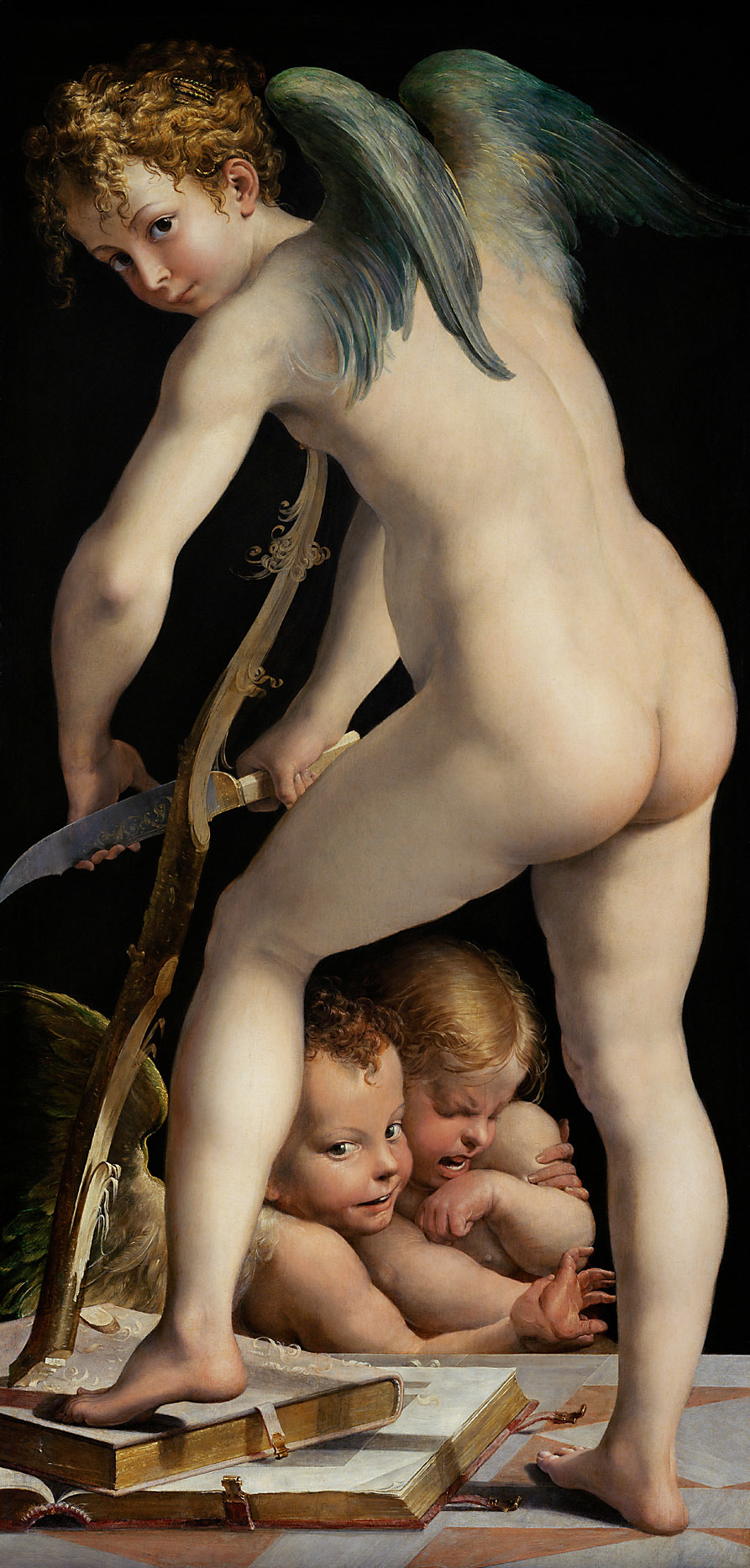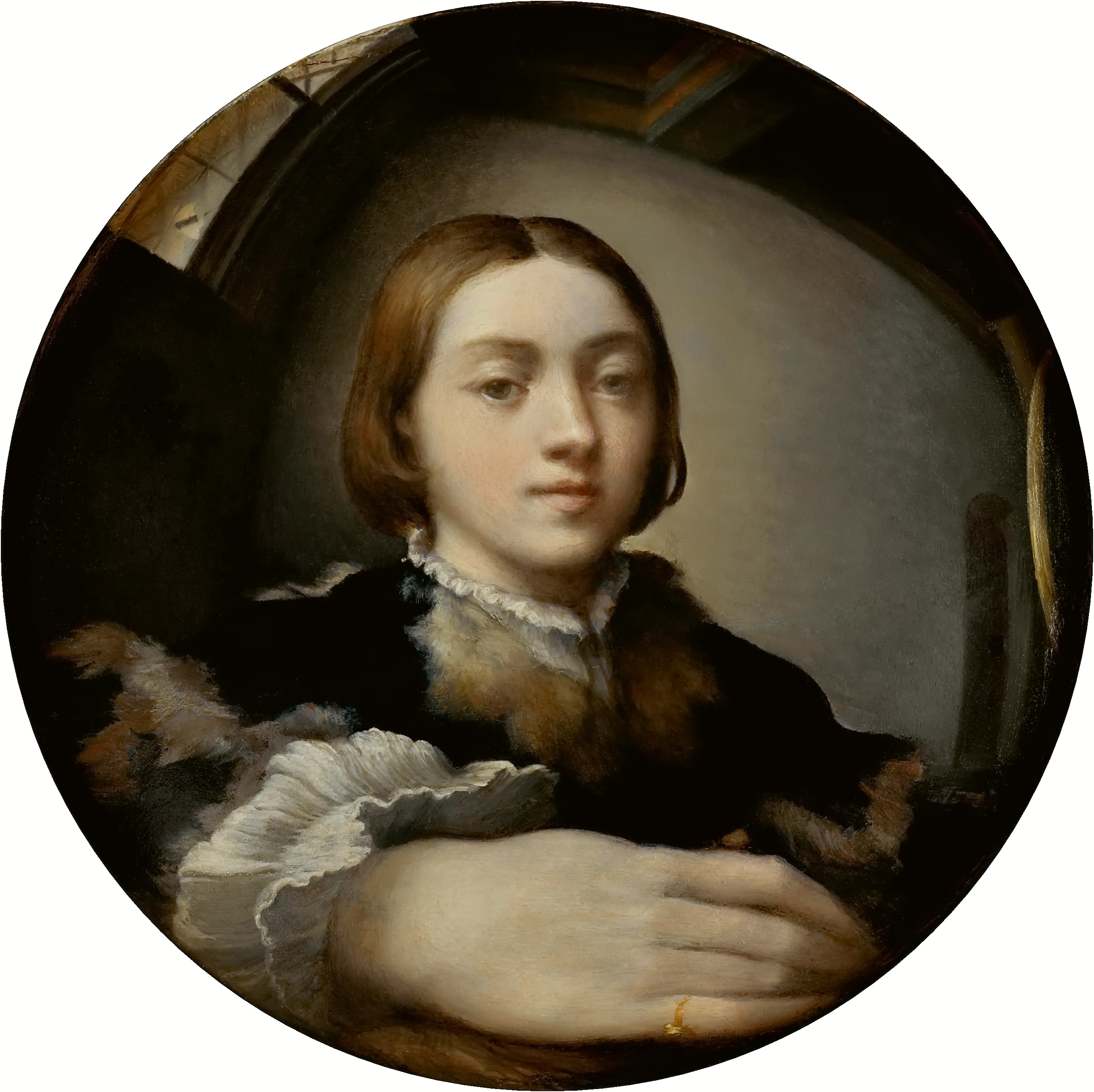The inspiration for this painting might be traceable back to a sculpture the Italian Mannerist painter Parmigianino (Francesco Mazzola) may well have seen in 1530 in the Grimani collection, in Venice. The painting presents Eros (also known as Amor or Cupid), painted in a sculptural pose. The theme of the painting probably derives from late antiquity notions in which Eros (love), Himeros (sexual desire), and Pothos (longing) form an erotic triad. During the Renaissance, these roles were redefined as heavenly and earthly love. Parmigianino comments on the difficulty of deciding between these two forms of love.
The work appears in the inventory of Francesco Baiardo of Parma, who was a friend and patron of Parmigianino. Late Renaissance art biographer Giorgio Vasari writes that Baiardo commissioned the "Cupido che fabbrica di sua mano un arco." ("Arch" can also be translated as "bow.") The painting was inherited by Marcantonio Cavalca and later went to Antonio Pérez, secretary of state to Philip II of Spain, who brought it with him to Spain. In 1579 Pérez fell into disgrace, and was forced to sell the painting to an envoy of Rudolf II, Holy Roman Emperor. The sale was however blocked by the Spanish crown, after which it was acquired and arrived in Prague in 1603, together with Correggio's Jupiter and Io and Ganymede Abducted by the Eagle. It was transferred to Vienna's Schatzkammer in 1631.




Cupid Making His Arch
oil on canvas • 135 cm × 65.3 cm
 Parmigianino
Parmigianino